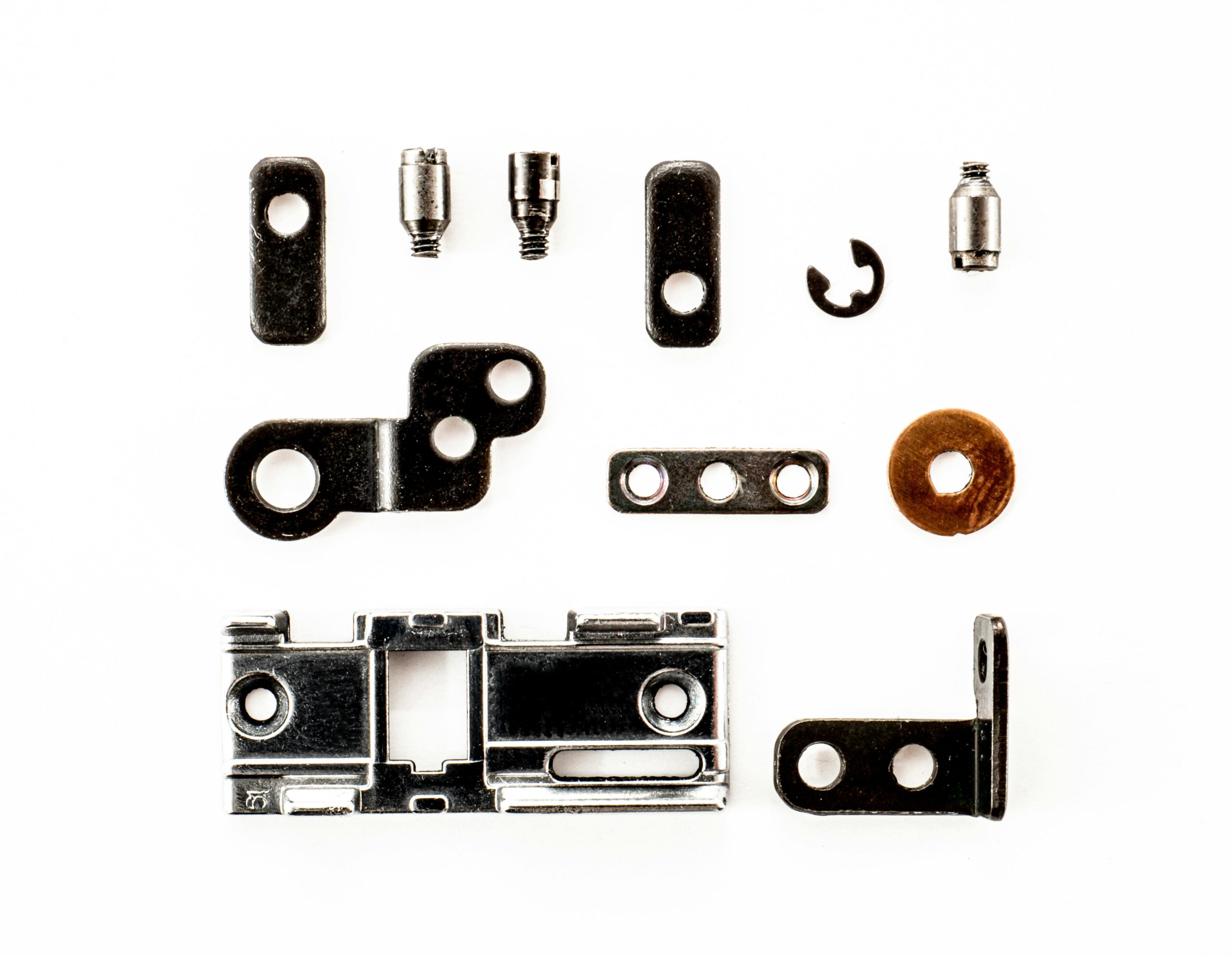What Is The Difference Between Shielded And Unshielded Rj45 Connectors?
In the realm of networking and data transmission, RJ45 connectors play a crucial role. These connectors, commonly used for

In the realm of networking and data transmission, RJ45 connectors play a crucial role. These connectors, commonly used for Ethernet networking, are essential for establishing reliable connections in both home and professional settings. However, a critical decision when setting up these connections is whether to use shielded or unshielded RJ45 connectors. Each type has distinct characteristics and applications, which can significantly impact network performance. This blog will explore the differences between shielded and unshielded RJ45 connectors, helping you make an informed choice for your networking needs.
What are RJ45 Connectors?
Before delving into the specifics of shielded and unshielded variants, it’s important to understand what RJ45 connectors are.
RJ45, which stands for Registered Jack 45, is a standardised networking interface used primarily for Ethernet connections. These connectors feature eight pins, enabling the connection of four twisted pairs of wires, which are essential for transmitting and receiving data.
Unshielded RJ45 Connectors (UTP)
Unshielded RJ45 connectors, also known as UTP (Unshielded Twisted Pair) connectors, are the most common type used in various networking environments. As the name suggests, these connectors lack additional shielding around the individual wires or the overall cable. Here are the key characteristics and benefits of unshielded RJ45 connectors:
- Cost-Effective: Unshielded RJ45 connectors are generally more affordable compared to their shielded counterparts. This makes them an attractive option for budget-conscious projects or large-scale installations where cost can be a significant factor.
- Ease of Installation: The absence of shielding makes UTP cables and connectors easier to handle and install. They are more flexible, lighter, and can be easily routed through tight spaces, making them ideal for residential and office environments.
- Sufficient for Low-Interference Environments: In environments with minimal electromagnetic interference (EMI) or radio frequency interference (RFI), unshielded RJ45 connectors perform adequately. They are commonly used in standard office settings, residential networks, and less demanding applications where interference is not a major concern.
- Standard Performance: UTP cables and connectors provide reliable performance for most general networking needs. They support a wide range of Ethernet standards, including Fast Ethernet (100 Mbps) and Gigabit Ethernet (1 Gbps).
Shielded RJ45 Connectors (STP)
Shielded RJ45 connectors, also known as STP (Shielded Twisted Pair) connectors, are designed to provide additional protection against EMI and RFI. These connectors incorporate various shielding techniques to minimise interference and maintain signal integrity. Key characteristics and benefits of shielded RJ45 connectors include:
- Enhanced Protection: The primary advantage of shielded RJ45 connectors is their ability to reduce the impact of EMI and RFI. Shielding can be applied to individual pairs of wires (foil shielding) or to the overall cable (braid shielding), or both. This shielding helps to preserve signal quality and reduce data transmission errors, especially in electrically noisy environments.
- Better Performance in High-Interference Areas: Shielded connectors are ideal for environments with high levels of interference, such as industrial settings, data centres, and areas with a lot of electrical equipment. They ensure more stable and reliable data transmission in such challenging conditions.
- Improved Data Rates and Distances: With the added protection against interference, shielded RJ45 connectors can support higher data rates and longer transmission distances compared to unshielded connectors. This makes them suitable for applications that require high-speed and long-distance data transmission, such as video streaming, gaming, and critical business operations.
- Reduced Crosstalk: Shielded cables and connectors also help in reducing crosstalk, which is the interference caused by adjacent pairs of wires within the same cable. This is particularly beneficial in high-density cabling environments where multiple cables run in close proximity.
Choosing Between Shielded and Unshielded RJ45 Connectors
The choice between shielded and unshielded RJ45 connectors ultimately depends on the specific requirements of your networking environment. Here are some factors to consider when making your decision:
- Environmental Interference: Assess the level of electromagnetic and radio frequency interference in your environment. If you are setting up a network in a typical office or residential area with minimal interference, unshielded connectors should suffice. However, for industrial areas, data centres, or locations with significant electrical noise, shielded connectors are the better choice.
- Budget: Consider your budget constraints. If cost is a major factor, unshielded RJ45 connectors are more economical and can provide reliable performance in low-interference environments. However, if network reliability and performance are critical, investing in shielded connectors may be worthwhile.
- Performance Requirements: Evaluate the performance needs of your network. For standard applications such as web browsing, email, and file sharing, unshielded connectors are typically adequate. For high-speed data transfer, video streaming, and mission-critical applications, shielded connectors can offer enhanced performance and reliability.
- Installation Considerations: Think about the installation process and cable management. Unshielded cables and connectors are more flexible and easier to install, especially in tight spaces. Shielded cables, while providing better protection, can be more rigid and require careful handling during installation.
- Future-Proofing: Consider future expansion and upgrades. If you anticipate higher data rates and increased network demands in the future, opting for shielded RJ45 connectors can provide a more future-proof solution, ensuring your network remains robust and reliable as technology evolves.
Comparing RJ45 Connectors to D Sub Connectors
While RJ45 connectors are widely used in networking, it’s worth mentioning another type of connector often encountered in electronic and industrial applications: D Sub connectors. D Sub connectors, short for D-subminiature connectors, are primarily used for serial and parallel connections, such as connecting monitors, printers, and other peripheral devices to computers.
The key differences between RJ45 connectors and D Sub connectors include their design, application, and pin configuration. RJ45 connectors are specifically designed for Ethernet networking and feature eight pins for twisted-pair cables. In contrast, D Sub connectors come in various pin configurations, ranging from 9 to 50 pins, and are used for diverse data transmission tasks beyond networking, such as video and serial communication.
Conclusion
In summary, the choice between shielded and unshielded RJ45 connectors hinges on the specific needs of your network environment. Unshielded connectors offer cost-effectiveness, ease of installation, and adequate performance for low-interference settings. Shielded connectors, on the other hand, provide enhanced protection against electromagnetic and radio frequency interference, making them suitable for high-interference environments and applications requiring high-speed and reliable data transmission.
When planning your network setup, carefully consider factors such as environmental interference, budget, performance requirements, installation considerations, and future expansion. By making an informed decision, you can ensure optimal network performance and reliability.
Understanding the distinctions between these types of connectors will enable you to build a network that meets your needs, whether you’re setting up a home office, expanding a corporate network, or managing an industrial data centre. By choosing the right connectors, you can achieve efficient and stable network connections, ensuring seamless communication and data transfer across your network infrastructure.









